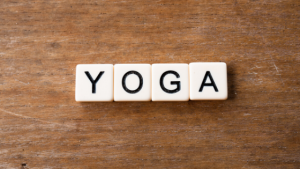
A good yoga class or session is more than just breathing and movement. It’s about finding balance, releasing negative energy, and focusing attention. In the fast-paced world we live in, sometimes those key concepts get away from us, and it can be challenging to get them back. Anyone looking at enhancing their yoga practice, whether you’re a novice or professional, can benefit from these tips to get the most out of each session.
Understanding the History of Yoga
Educate yourself on the topic of yoga and the rich spiritual history behind it. Reading books about the practice and development of movements can help you connect to the flow on a deep inner level.
Reading about specific poses and alignments will also help you perfect poses, easing the transitions during the flow. Knowing the purpose of each movement can help you understand the importance and motivation behind it as well.
Set Clear Intentions and Goals
By setting a specific intention at the beginning of class, you’ll stay focused, and it gives you something to return to when you feel unbalanced during the session. Selecting an intention doesn’t have to be hard, it can be a single word such as “peace” or “relax” or a phrase such as “I am enough, I am grateful”. Focusing on your intention during each breath will allow you to feel the movements and focus on the moment instead of the end goal.
Breathe
Staying conscious of each breath will allow you to stay in the moment to focus on those intentions. Be sure to take mindful breaths, and if needed, count in and out on the inhale and exhale to help steady your mind and center yourself. Having this mindfulness during class will allow you to experience all the sensations of the movements, and leave you feeling grounded and aware.
Listen to Your Body
If a movement feels too strenuous, or something feels uncomfortable, it’s okay to back off or adjust to find comfort. When you feel as though you are pushing too hard or reaching too far into the stretch, it’s okay to drop into child pose then return to your breathing before jumping back in. Just remember, trust your body and your instinct.
Be Honest With the Teacher
Even in a large class setting, it’s important that your instructor be aware of any physical limitations you may have. Whether it’s an old knee injury, a recent surgery, or something else if your instructor knows they can better help you during each flow to find a more comfortable alignment or transition. Be honest if a movement hurts and ask for help when you need it.
Lose Expectations
Don’t come to your first session expecting to feel enlightenment or the answers to all your inner questions. It takes time to perfect the movements and inner balance so be patient.
Once your feet touch the mat, let the day before you go, and don’t worry about what the day will bring. Focus on what is happening now and how your body is feeling. Let the teacher be your guide and use your inner teacher to help connect with each breath and movement.
Come to Class Prepared
The last thing you want is your phone ringing during a challenging pose or needing a bathroom break as soon as you get started. Turn off your phone and put it away, or better yet, leave it in the car. Be sure to visit the restroom before you enter the classroom, too.
Be sure your clothes are comfortable and well fitted so you aren’t fidgeting or adjusting them during the practice. You want to be as free of distractions as possible so, take careful note when preparing for your session.
By ensuring this type of preparation you will also show respect toward your instructor who has taken the time to be there for you that day. It shows your level of commitment to yourself and how important the practice is.
Enjoy
Attending a yoga practice session should be as relaxed and stress-free as possible. Whether you’re about to sign up for your first lesson or are preparing to teach your hundredth class, it’s always good to reflect and remind yourself of some of these best practices.



